-
- Miramar Plaza
- 954 Avenida Ponce de Leon
- Office 201A
- San Juan, Puerto Rico 00907
- + 1 (787) 721 3953
The digital revolution has brought technology into every aspect of our lives. Big Data, Internet of Things (IoT), Artificial Intelligence, Machine Learning, Cloud Computing, AR / VR…technologies once considered science fiction have now become reality. However, none of these innovations work without connectivity.
Our lives today revolve around technology. When a user first enters an establishment, they seek a connectivity experience that supports the technology-enhanced lifestyle to which they have become accustomed. It’s unacceptable to have no connectivity, just like it’s unacceptable to have no hot water or lights at night. On the other hand, great connectivity really improves our quality of life: the more signal bars, the higher our satisfaction.
Mobile connectivity has changed the way we live and work. When you add that we spend 90% of our lives and consume 80% of our data in indoor environments, it naturally follows that we need this essential service indoors more than anywhere else. Unfortunately, the wireless carriers cannot expand cellular networks to every individual building, since they have finite capital budgets and many competing coverage priorities. This means that owners and landlords—not the mobile operators—are now tasked with keeping users connected on their premises. Survey after survey shows that users agree: connectivity is the venue owner’s responsibility.
Imagine…
All of the above examples are real, and they are likely happening right now all over the world. Now, imagine two scenarios: one in which everyone can easily connect to the mobile data network and get a great signal and the other in which there is no strong signal, limiting all connectivity. In this second scenario, a customer or potential customer will not only have a negative experience, but sales may be lost, impacting your business.

When it comes to providing a desired connectivity experience, indoor environments pose unique challenges. Walls block antenna signals. High user density slows data flows. In these circumstances, a normal macro coverage solution cannot handle the additional demand for data.

As a result, buildings need complementary indoor systems so that users can remain connected. The key is to invest in a solution that meets the needs of today and anticipates the use cases of tomorrow.
To address this problem, telecom engineers have developed an internal and dedicated signal distribution system that connects back to a wireless carrier’s network. If you’re thinking about Wi-Fi, think again. This cellular infrastructure is called a Distributed Antenna System (DAS).

DAS is a telecom infrastructure solution that connects the networks of the mobile operators to users in a building. Through a system of small antennas installed throughout the property, the solution emits a quality signal that all users can enjoy.
A true DAS is a standalone system that offers a dedicated service, rather than boosting signals captured externally. It is dimensioned to guarantee the best mobile connectivity experience for the site by accounting for characteristics unique to each enterprise, such as the architectural characteristics, flow of people and user profiles.
These units are responsible for both the signal generation produced by operators and also the signal reception by mobile devices. Signal sources manage signal generation and reception by interfacing with each carrier’s network core through which users connect to their desired applications and websites. This signal source is the same from both voice calls and data sessions.

In a dedicated coverage system, the signal produced from the carrier’s “head-end” needs to be applied homogeneously throughout the area that requires the coverage improvement. For example, in a mall, the signal level coming from the source must be consistent at all points in the mall so that the signal can be combined across various technologies and frequencies and multiple operators. As such, there is only one single transmission path, and from this one path the system spreads signals throughout the venue.
This signal, which has been combined across a single distribution route, requires an irradiation point called an antenna. This antenna needs to fit in aesthetically with the surrounding environment.
DAS is suitable for companies that have a great flow of people and whose consumption experience depends on connectivity.

Wi-Fi may be the first thing that comes to mind when it comes to wireless internet. It’s cheap, unregulated and fast to set up. However, Wi-Fi has its weaknesses.
First is network congestion. With hundreds of people and employees connected to a single network at the same time, this can lead to overload, slow speeds and unreliable connections. Since there is no regulation of the network, multiple Wi-Fi networks in close quarters can easily interfere with one another, further worsening the quality of the signal. Then there’s the issue of security: Wi-Fi security is notoriously vulnerable to threats, even with pesky password requirements. Wi-Fi also has no quality of service guarantees.
Since almost everyone today has a paid data plan, why not forego these strains by making better use of your mobile network? LTE has virtually zero network downtime, features robust service-level requirements, avoids any dropped calls, and is designed to accommodate seamless data sessions. LTE security is also the gold standard for encryption and user authorization, since it is based in unique SIM card identities, which means that your data stays safe no matter where you are connected.
Moreover, if there’s ever a problem with the WiFi network, the ensuing access problems could create real chaos. A good mobile network serves as an ideal backup should this occur.
The best user experience is when there are no breaks in connectivity. That is what a DAS guarantees.
Neutral hosts are telecom infrastructure businesses that build shared networks that host all the wireless carriers at once. Some unique features of neutral hosts include:

As they met operators’ needs and formed relationships with various suppliers, neutral hosts created a solution that serves multiple parties simultaneously.
Neutral hosts have become specialists in telecom infrastructure due to their singular focus. They deploy new technologies and processes that steadily improve the quality of what is offered to the market.
Neutral hosts centralize the equipment needed for carriers to serve a given area, thereby lowering overall costs.
Through a neutral host, a venue does not need to maintain contacts within different operators. Neutral hosts serve as intermediaries between the venue and the operator, removing operational overhead for the venue and accelerating the speed of response in case maintenance is required.
Centralization eliminates the use of extra telecom equipment and helps minimize architectural and environmental impacts.
The best neutral hosts are experts when it comes to telecommunications infrastructure. Neutral hosts in the past only offered this expertise to the wireless carriers due to market demands, but now that expertise is available other types of companies that require connectivity, especially the enterprise. This means you don’t have to be a wireless carrier anymore to control your end user’s connectivity experience.
5G is already a reality and neutral hosts have the challenge to provide cost-effective and technically advanced solutions so that its potential is fully available to the end users.
QMC has emerged in this environment as an American multinational wireless infrastructure company with an asset base of 3,800+ projects installed and under development.
We have demonstrated our expertise through turn-key solutions for various segments of the market. Unlike other neutral host providers, which are typically speculative in nature, we empower the enterprise to take control of their own destiny with guaranteed 5G-ready mobile connectivity after the system is installed.
How do we guarantee this connectivity, where so many others have failed? Part of the reason lies in our flexible financial model. We don’t require upfront capital from venue owners. With QMC, owners can pay off the system and its long-term operational costs with a monthly fixed fee after we’ve taken all the upfront installation risk. We don’t get paid till carriers are on air.
Another reason why we empower venues with connectivity is how we work with the rest of the wireless ecosystem. We align all designs with our carrier partners in advance, ensuring that our deployments meet their quality standards. Our full suite of capabilities allows us to plug in to projects that have already begun but are perhaps missing certain elements, such as system design, contract management, sparing programs, or long-term capital. We add value while also ensuring that our partners win. That is what “fostering growth” means to us.
Our approach enables connectivity for a wide variety of venues that typically haven’t benefited from such a solution before. We help them turn pain points into strengths. In a time of surging data demand, we give venues a chance to improve their user experience and their competitiveness.
Covered square feet
People served
Number of antennas
The first step of any DAS project at QMC is the solution design. Our team of highly qualified professionals uses top-of-the-line software tools to design a customized solution for your facility or property. Our team is flexible enough to meet your needs while still meeting the carriers’ uncompromising signal quality standards for coverage, quality, and interference. Because we design in-house, we don’t rely on any one vendor—that guarantees that you’ll get the best solution for your venue.
The successful implementation of a DAS system begins with quality equipment: QMC purchases and tests all equipment and parts that go into our DAS systems. During implementation, our teams work efficiently and during off-hours. We manage all contractors and suppliers so that you can address your other priorities. Regardless of the building type, we can resolve any technical concerns all while ensuring a seamless relationship with the carriers.
QMC invests heavily in the people, technology and processes necessary to monitor and maintain our systems. QMC performs preventive maintenance according to a strict schedule and completes corrective maintenance if the unexpected occurs. These efforts allow us to guarantee that the system is always up to date and performing optimally, providing our clients with peace of mind.
QMC owns and operates a state-of-the-art Network Operations Center (NOC) that remotely monitors our entire network 24/7. If any errors appear in our network or with our equipment, the NOC notifies our field team to restore the service in accordance with each customer’s service level agreement (SLA). The NOC is responsible for opening tickets and tracking tickets — from opening to closing. With an end-to-end project approach, we are obsessed in making sure that our customers are taken care of in every step of the process.
The main types of venues where we operate include offices, residential properties, health systems, hotels, universities, malls, entertainment venues, industrial facilities, and airports.



Education has undergone major changes in our lifetime, especially after COVID-19. The Internet broadened the definition of what a classroom is with distance learning and expanded the university structure by allowing for digital access to entire library collections, research, and classes. The commercial reach and potential of educational institutions has spread throughout the globe, which means that connectivity has become a crucial lever for universities to maintain their relevance and prestige. Campus safety has also surged to the forefront as a chief concern for educators, and cellular connectivity helps campus security protect student or faculty members in the case of an emergency. Connectivity also improves team communication, allowing students and faculty to become much more efficient and synchronized.



Active DAS is ideal for large venues, such as malls, hotels, stadiums, hospitals, airports, universities and convention centers where considerable cellular capacity is required due to the high flow of people. It is an easily adaptable infrastructure for new technologies such as 5G and can be designed and installed for projects of any size. It also allows for remote monitoring. The active DAS uses fiber optic cables to distribute the signal from a base station – which gathers all the signals from the operators in one place – to antennas distributed throughout the property.
Passive DAS uses passive components (hence the name) such as coaxial cables, splitters and diplexers to distribute the signal, which originates directly from the operators’ radio equipment through the low power antennas. It does so without converting the signal from RF to optical signal as in an Active DAS. The passive system does offer lower costs in relation to an active system, but it cannot be easily upgraded to new technologies or support other adaptations, such as changes in layout and the inclusion of additional coverage areas. Passive DAS systems work best in smaller venues where the flow of people is more limited.
Lite DAS is a solution that allows a building owner to cover specific floors or sub-divisions of floors, rather than an entire building. Wen combined with a centralized solution, significant savings can be obtained by eliminating certain CAPEX costs and reducing OPEX.
A Lite DAS offers the same signal quality as a DAS but enjoys the economy of a more targeted solution.
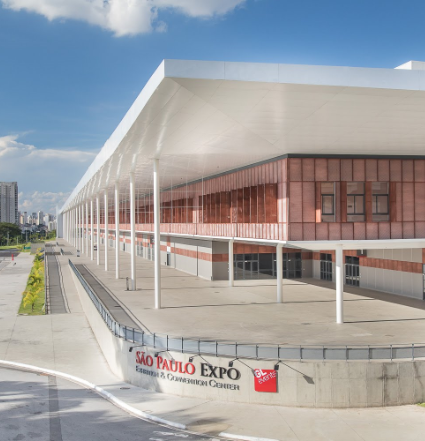
São Paulo Expo is located on the Rodavia dos Imigrantes, in the neighborhood of Jabaquara in the southern region of the capital city. After its inauguration in 2016 and increasingly high frequency of events (up to 120 in 2019), the existing telephony infrastructure in the building could no longer support the large volumes of people. As with the supply of electricity and water, São Paulo Expo needed cellular coverage to function perfectly throughout its pavilion.

The Vila Galé Group is the second largest hotel group in Portugal and ranks among the top 200 hotel groups in the world. One of its ventures, Vila Galé Cumbuco Hotel, is an all-inclusive resort on Praia do Cumbuco located 3km away from the nearest village. The resort was built far away from the state capital, Fortaleza, and seeks to bring development to the region - and that includes cellular infrastructure. In order to bring their guests the best possible experience, Vila has come together with QMC to create the best possible connectivity solution for the resort.
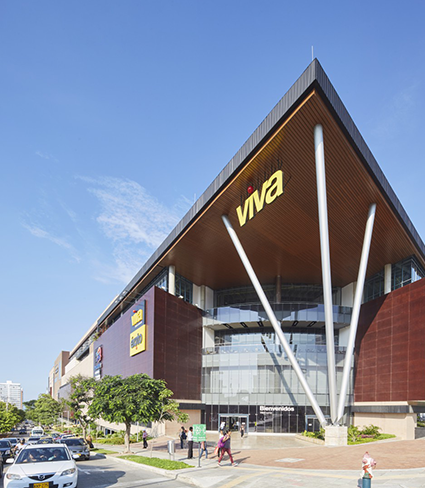
Viva Barranquilla is a prominent shopping mall situated in Barranquilla, Colombia. It’s part of the largest network of shopping malls in the country, Viva Malls (of Grupo Éxito), which draws from more than 110 years in retail and 20 years of expertise in real estate. Viva Barranquilla has several high-quality stores and receives a large volume of tourists, who seek an outstanding shopping experience—and that is directly related to cellular connectivity.

At 919 feet in height, Torre Koi is one of the tallest buildings in Latin America. The building is a mixed-use skyscraper with 64 floors situated in San Pedro Garza García in Monterrey, Mexico. Given its status as a symbol of the city of Monterrey, Torre Koi’s management knew from the beginning that they needed to supply high-quality services to tenants, and that included cellular coverage to all of the building complex.
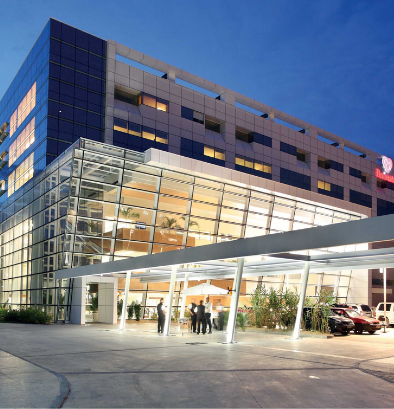
Healthcare providers increasingly rely on modern telecommunication solutions to deliver quality care for patients. As technology and public needs advance, investing in telecommunication solutions is key to long-term stability and operations. Distributed Antenna Systems (or DAS) for hospitals have emerged as the best way to improve connectivity, and a good example of this is found at Hospital Perinatal Barra.
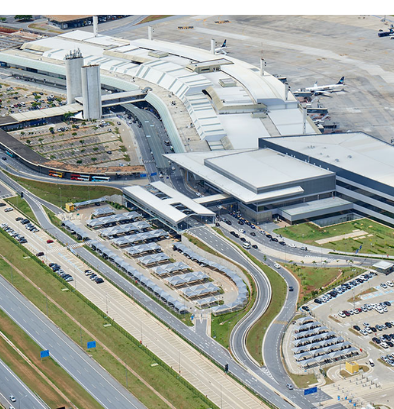
Minas Gerais is known for its culture, history, and indescribable cuisine. One of the main point of entry to Minas Gerais is Belo Horizonte International Airport, located in the municipality of Confins. The airport is home to one of the busiest terminals in the country. In 2013, to prepare for the 2014 FIFA World Cup Brazil, the federal government held an auction to privatize the airport for 30 years. The winner was a consortium formed by the CCR group and Zürich Airport.

A sought-after destination for more than 2.5 million tourists in Rio de Janeiro, Christ the Redeemer stands at 124 feet high, weighing 1,145 tons. The monument is the city’s postcard and is considered one of the seven new wonders of the world. Located atop Corcovado Hill in Tijuca National Park, the area is covered by forest, which leads to poor cell phone coverage.
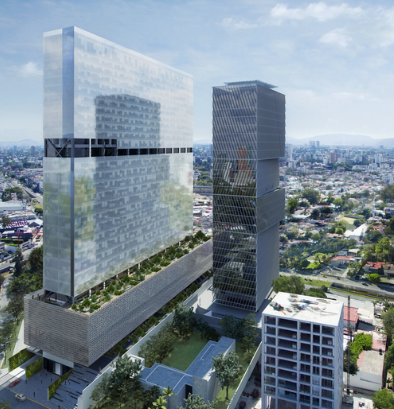
Imagine living and working in one of the best locations in Guadalajara, capital of Mexico’s Jalisco state, without worrying about furniture, appliances or services. You have everything that you need, except that whenever you want to call a customer or friend, there’s no cellular signal. Not even in the case of an emergency.
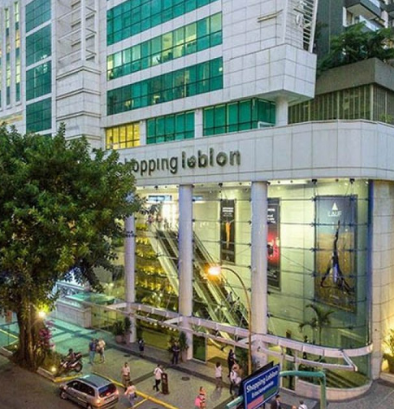
The beautiful city of Rio de Janeiro is home to many attractions and popular destinations. In the affluent southern side of the city, the Rodrigo de Freitas Lagoon and Leblon Beach draw tourists and locals alike.

Suppose you’re coming to São Paulo for business. In the largest economic and industrial center of the Southern Hemisphere, it’s hard not to pass by Brigadeiro Faria Lima Avenue, São Paulo’s Wall Street, which unites various multinational companies across the technology and finance sectors. One building stands out: Pátio Victor Malzoni, the largest corporate structure on Faria Lima.
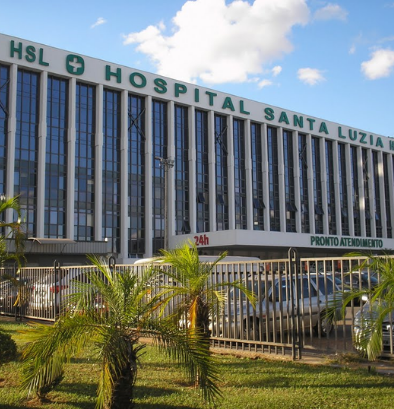
Hospital do Coração do Brasil (HCBr) and Hospital Santa Luzia (HSL) are located in Brasília, Brazil’s capital. The hospitals are regional leaders in quality and service and form part of the D’Or São Luiz network, the largest network of private hospitals in Latin America.
“We must always work to improve the quality of the guest experience. We do not want mobile signal to be the issue that makes the customer choose another destination over us. QMC helped us, through capillarity and flexibility, to achieve this goal.”
André Corcos
Infrastructure Director at Vila Galé Group
The implementation of a DAS project is complex, but QMC manages the project in stages so that the enterprise is impacted as little as possible. QMC’s DAS solutions mostly use fiber cabling, which is thinner and lighter and thus much easier to pass through structures. In addition, we work with flexible hours so that our customers’ day-to-day activities are preserved as much as possible.
Another important point to note is that throughout the implementation, QMC will be focused on ensuring that the completed DAS structure will not be noticeable to passersby. The antennas must respect the architectural style of the venue and blend in with the surrounding environment.
Yes. DAS is an investment in infrastructure and, as such, needs to stand the test of time. However, QMC includes the maintenance as part of its service offering. We commit to an SLA that meets the carriers’ stringent requirements, and in the event that there is an issue, QMC offers customers a 24-hour support team. Our constant and proactive monitoring reduces the chance of technical problems that require major maintenance.
No. QMC builds antenna systems to distribute cellular signal through voice and data. No Wi-Fi signal is transmitted through QMC antennas. At present, the signals transmitted are 2G (for voice) and 3G, 4G and 5G (for data).
Not really. Macro cellular towers are still very important in the mobile connection ecosystem, and those towers contain antennas that emit signal over long distances. However, in the case of indoor venues, the most commonly used antennas are much smaller and more discreet. They are often attached to the ceiling and are smaller than a Wi-Fi access point. QMC’s DAS projects always take into account the aesthetics of the establishment so that we can make the antennas appear as minimally intrusive as possible.
An indoor system is necessary to prevent users from experiencing a drop in mobile signal and data performance. The mobile tower signal encounters two problems when trying to connect to devices inside a venue:
The antenna design suggested by QMC always requires approval by the venue owner before installation. This includes the number of antennas, their location and aesthetics. QMC makes the project as flexible as possible, so long as it does not compromise the quality of the system, in order to fit in with the existing aesthetics of the establishment.
In most cases this will be necessary for us to run cables through the ceiling. However, the QMC team always respects the hours that the venue owner makes the facility available to us. QMC adapts to your needs to minimize the impact on everyone involved and avoid jeopardizing day-to-day operations. The result of our implementations is not visible to you or your venue guests.
No. Our systems are designed such that all antennas receive signal from several operators, similar to the way a 24-hour ATM works for multiple banks.
Operators integrate their signal source equipment into the system built by QMC (usually in a specific head-end room within each project). All the operators need to do is connect a cable into our network and from that moment on the signal is released throughout the establishment.
QMC specializes in the infrastructure market: we build infrastructure in 5 countries and we have partnerships with all major local operators. All of our systems are built to accommodate all operators, which means that it is not necessary to have separate deployments for each operator or to juggle multiple parties (often with competing interests).
QMC interfaces with operators when necessary (not constantly) and is responsible for all maintenance. Imagine having a problem on the network and having to call all operators to figure out where the problem is. By working with QMC, you can focus on your core business and do not have to manage the entire relationship with the operators. This is all in addition to receiving dedicated customer service from QMC.
QMC is fully responsible for the maintenance and upkeep of the room in which our equipment is installed.
The short answer is no – in most cases the antenna has its own signal, not a repeater.
QMC does not collect data from any consumer. We are a company that builds infrastructure – the bridge between establishments and operators. We do not have access to any data from users’ mobile phones and we do not have the capabilities to collect data from consumers.
No. QMC only emits signal by building systems that connect to the systems of mobile operators. Information security is a responsibility that rests with the operators.